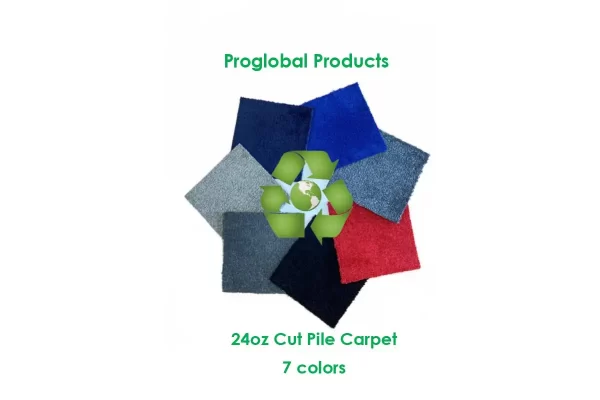Pictured L-R: Joe Federbush, James Obermayer, and Victor Kippes
Advice From Three ExhibitorLive Presenters
by Scott McKinney
If you’re spending thousands of marketing dollars at trade shows, but not taking full advantage of the data at your fingertips, you’re missing a huge opportunity for maximizing trade show ROI. Three trade show marketing experts and EXHIBITORLIVE 2018 presenters share their best tips for getting the most out of data at your trade show.
Be Clear About Your Ideal Prospect
Instead of scanning away, consider your ideal prospect. “Targets could be based on industry, job titles, company size, or product interest,” says Joe Federbush, president of Evolio Marketing. “The more selective you are in who you’re attracting to your booth, the more potential success you’ll have in the outcomes of those visits.” Once you’re clear about the type of customers and prospects you want to attract, you can prepare a strategy for your on-floor exhibit and beyond.
Enlist The Show Producer
Contact the show organizer–they will have some form of information about the attendees. Partner with them, and utilize their data. “The more the exhibitor knows the percentage of the audience that represents their target, the better they’ll be able to budget, send the right kind and number of staff, and set realistic expectations of their results,” says Federbush. “It’s not about every attendee at the show, it’s about the percentage of attendees that represent the target.” You can also use pre-show data to send offers to attract attendees to your exhibit.
Consider Your Lead Capture Device
Also, consider your lead acquisition device or application–does the trade show organizer supply one? If so, does their device allow you to ask customized qualifying questions? If it doesn’t, go to an outside vendor that allows you to ask qualifying questions and connects responses to a follow-up system, advises James Obermayer, founder of the Sales Lead Management Association.
“Trade show leads close much faster than any other kind of lead–they enter that booth for a reason,” says Obermayer, “Yet the show management lead acquisition device is often inferior. They have little space for notes, they don’t ask specific questions pertaining to the person’s need,” he adds. “Generally 10-20 percent of leads are hot, so if salespeople get 10 leads, they need to know which two leads are hot and which are going to buy in the future.”
A suitable lead capture device or application won’t empty your piggy bank. “As a rule, only 3-5 percent of your budget needs to go towards lead qualification,” says Obermayer.
Strategically Organize Your Booth
When planning your booth layout, consider how you will collect data from visitors. “If your booth is large and you’ve only got one spot where somebody can scan their badge, there will be data loss,” says Obermayer. “The company will get one quarter to one half the number of inquiries they should be getting out of that trade show.”
How many lead acquisition devices (or apps) should you have on hand? Obermayer recommends one for each ‘demonstration island’ or salesperson covering that area.
Qualify Visitors To Your Exhibit
66 percent of trade show managers don’t have a formal lead ranking process at trade shows, according to a recent survey from the CEIR group.
Do you have a formal lead ranking process?
“You’d be amazed at how much money companies waste in getting salespeople to call bad leads,” says Victor Kippes, CEO of event marketing tech firm Validar Inc. “Sales representatives want to know where they fall in the buying cycle. If they are a buyer, what product are they interested in and why?”
What kind of lead qualifying questions can you ask? “First, ask the attendee how they prefer you to follow up, then categorize them into ‘hot lead,’ ‘cold lead,’ or ‘free ice cream lead,’ ” says Kippes. Even the “free ice cream leads” can be valuable–the cost-per-lead can be very competitive if significant numbers are drawn in.
Other questions you can ask, according to Kippes: Are they a decision maker? Are they genuinely interested? How much do they need or want your offering? Do they see value in what you have to offer? What application do they have in mind for it?
Measure Giveaways Using A Brand Recognition Survey
If you sponsor a show or give away freebies, measure the impact of your messages. “Ask attendees, did your experience or interaction with that brand enhance that brand’s perception? Did it get a message through?” says Federbush. Also, consider the goal of your branding: what do you want your brand to stand for? Then, ask respondents a scaled question that measures how much they agree with a corresponding statement about your brand.
After The Show, Follow Up Using Your Data
According to CEIR, most companies make only one to three follow-ups. This means they are losing sales to competitors that utilize a thorough follow-up strategy.
How many touches should a non-responsive lead receive before it is discarded?
What’s the smart way to follow up? Kippes advises to send only the “hot leads” to sales staff–the latest sales automation tools will do this automatically. Second, direct the “cold leads” to a follow-up marketing system. Third, enter the “free ice cream leads” into a long-term, content-based marketing channel. Offer useful information, and be smart about your strategy. “If you start categorizing leads in this manner, it will be worth its weight in gold,” says Kippes.
Scott McKineey is a freelance technology and training writer whose recent clients include Training magazine and Training Data With Intelligence’s “Upside” publication. For more info, visit www.scottmckinneywriter.com. This story originally appeared in the March/April issue of Exhibit City News, p. 72, http://issuu.com/exhibitcitynews/docs/mar-apr_ecn2018?e=16962537/58622195 .





























